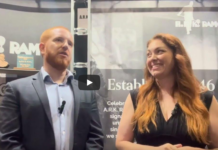
While much of the world stopped in 2020, one thing did not: sign code updates. In some cases, while everyone was distracted and businesses were struggling to survive, sign code changes occurred under the radar, which has led to some troublesome results.
Some of these communities are finally responding to the five-year-old Supreme Court case, Reed v. Town of Gilbert. This court ruling required virtually every municipality in the United States to explore whether their sign codes were compliant with this landmark court ruling, which prohibits distinctions based on speech.
Often as they dig into this issue, they look at a few other things while they’re “under the hood.”
And sometimes, without expert input, they come up with some pretty crazy ideas.
That’s why it is so important that ISA (or one of our Affiliates) be involved, to ensure that our industry’s voices are heard—and so are our end users.
One example are the significant restrictions on sign location, among other things, proposed by the South Salt Lake, Utah planning commission. The commission has developed these changes without seeking input from the sign and graphics industry or the local business community.
International Sign Association member company YESCO, a one hundred-year-old sign company based in Salt Lake City, found out about the proposed changes and reached out to our association for help.
In a coordinated effort, while ISA’s advocacy team explored the proposal and pointed out deficiencies in the proposal to city planners, YESCO reached out to business owners to make them aware of the situation.
YESCO provided 300 signatures from businesses that opposed the proposed changes in just a few days. That was enough to sway the commission, which tabled code changes until it could get more input; as a result, this gave ISA a chance to further analyze their proposed revisions to offer more reasonable solutions.
There are legitimate reasons that the city needed to tweak its existing sign code, which hadn’t been updated for eighteen years. It also needed to conform to recent changes in state law.
But it’s important that we have a seat at the table before or as these discussions are occurring.
Through the years, ISA has worked with hundreds of local communities. We understand the current trends and can educate planners and other local officials on what’s possible.
For instance, many communities want to outright ban electronic message centers without fully understanding their capabilities—and their economic impact.
As we help them understand that these signs are dimmable, for instance, and that they provide a tremendous boost to their local businesses, they’re more receptive to crafting more business-friendly codes and regulations.
And yet, sometimes, something like Utah will slip through the cracks. That’s where we need you to be our—and our industry’s—eyes and ears on the ground.
If you know of a local community that is considering revising its sign code, or in the midst of working on it (or even just needs to improve it), please immediately contact ISA, so that our Advocacy team can work with local officials and local member sign companies to make sure that regulators understand the importance of signs and graphics to the businesses that operate there.
To help this process, please share any sign code revisions you’re aware that are happening in your community with me.
—David Hickey, Vice President of Government Affairs at the International Sign Association (ISA)










